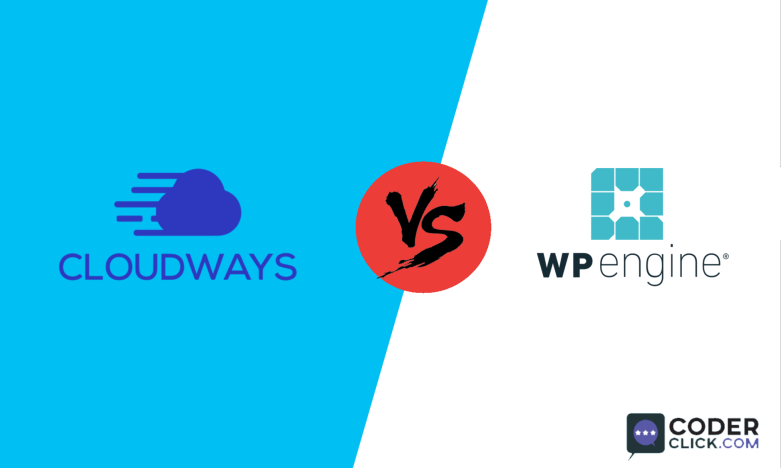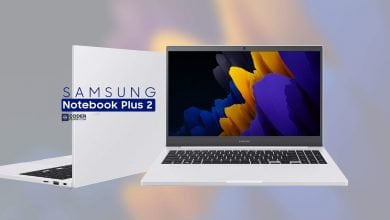Cloudways vs WP Engine: Select the Right One!

There are many hosting providers available in the hosting industry. Among them, Cloudways and WP Engine both are the large company in the hosting arena. Choosing the right one is an overwhelming prospect for you.
Are you dangling to choose Cloudways vs WP Engine? Don’t worry.
To get rid all of your confusion, we provide all the information of Cloudways and WP Engine. We value your time. So, considering your valuable time, we research these and show a complete representation of it.
Both the hosting providers are top-rated and attractive to their users all over the world. Due to their performance, functionality and other various feature, they are in the top of the client’s choice list.
Comparing Cloudways and WP Engine is very tough. But keeping this aside, we differ both of them. Keep on reading to know about this.
Cloudways Vs WP Engine: Know the Difference
Cloudways and WP Engine both are managed hosting providers, and both mostly converse in hosting industry. Here, we provide you Cloudways Vs WP Engine. Let’s get started.
Cloudways

In the cloud hosting world, two denominations are available. One is managed WordPress hosting, and the other is fully managed WordPress hosting.
Cloudways is the managed WordPress hosting. It only manages your server, and in this procedure, it offers a lot of leading features.
Here, beneath one rooftop, you get five chief cloud hosting providers. You can choose from the list as you wish.
Cloudways providers:
1. Google Cloud Platform
2. DigitalOcean
3. Vultr
4. Amazon Web Services
5. Linode
WP Engine

WP Engine not only manages your server but also maintains WordPress site involves backups, update and many more site-related problems.
Due to its cutting-edge structures and amazing performance WP Engine is well known fully managed WordPress hosting provider.
WebDev studios, SoundCloud and WPBeginner as well as many other companies choose WP Engine.
WP Engine providers:
1. Amazon Web Service
2. Google Cloud Platform
Based on your need, you can choose any of these.
Comparison Chart of Cloudways & WP Engine
Here, we show a comparison table of Cloudways and WP Engine. See the chart, and you will get precise information about these.
| Cloudways | WP Engine |
| Data centres | |
| 60+ | 18 |
| OS | |
| Linux | Linux |
| Fully managed hosting | |
| No | Yes |
| Staging URL | |
| Yes | Yes |
| Free SSL certificate | |
| Yes | Yes |
| Applications | |
| WordPress, PHP, Drupal, Magento, Joomla | WordPress |
| WP Expert support | |
| No | Yes |
| Cloning | |
| Yes | Yes |
| Unlimited Apps | |
| Yes | No |
| Site Backup | |
| Yes | Yes |
| Apposite for | |
| Freelancers, Startups and Bloggers | Critical businesses, giant industries |
We want to provide some additional features of both. Have a look!
Cloudways Price Plan and Facilities:
1. Price plan:
| Plan name | Processor | RAM | Space | Bandwidth | Price |
| GCE Starter Plan | 1 core | 1.7 GB | 20GB | 2 TB | $33.30/mo |
| AWS Starter Plan | 1 core | 1.75GB | 20GB | 2TB | $36.51/mo |
| Linode Starter Plan | 1 core | 1 GB | 25GB | 1 TB | $12.00/mo |
| Vultr Starter Plan | 1 core | 1 GB | 25GB | 1TB | $11.00/mo |
| DigitalOcean Starter Plan | 1 core | 1 GB | 25GB | 1 TB | $10.00/mo |
2. Enhanced stack:
The Cloudways provider offers advanced caching with NGINX, Redis, PHP 7, Apache, and Varnish cache to deliver high speed, performance and scalability. Its supports most strong databases, MySQL and MariaDB.
3. Content Delivery Network:
With only a single click you can activate CDN as Cloudways install it before.
4. Multiple application:
Cloudways offer a different kind of application. So, here you can use the various app at the same time.
5. Site migration:
By using the migration tool, you can migrate from any host to Cloudways server at free of cost.
6. 24/7 expert support:
You get expert support through live chat, ticket and also knowledge-based support.
7. Monitoring:
Monitoring module available in Cloudways server. Here, you can see how much you consume at any given time.
8. HTTP/2 Enabled:
As Cloudways servers are HTTP/2 enabled, it helps to diminish the communication gap between the web server and customers.
Generally, Cloudways offer trustworthy and reasonably priced cloud hosting services to the businesses that are small and medium-sized.
WP Engine Price Plan and Facilities:
1. Price plan:
| Plan name | Bandwidth | Space | price |
| Startup | 50 | 10 | $25/mo |
| Growth | 200 | 20 | $95/mo |
| Scale | 500 | 30 | $241/mo |
2. Unconventional stack:
It also relies on cutting-edge expertise like Cloudways. It operates its servers through Memcached, Varnish and Nginx. Clients use their desired programming language like Python, Ruby and PHP.
3. Expert support:
The expert team of WP Engine solves all the problems regarding server and WordPress through bot support and live chat.
4. Site migration:
With the help of the migration tool, you can migrate easily from any host to WP Engine.
5. Backup and recovery:
WP Engine manages all of the valued file database and media and provides you with instant recovery if needed.
6. Speed and performance:
WP Engine operates robust hardware and technology that ensure high speed, excellent performance and scalability.
7. Monitoring:
Through monitoring system, it monitors storage, consumption and database.
8. Application efficacies:
It helps the clients to boost their WordPress site and also help to enrich the performance of the WordPress site.
9. StudioPress themes:
It offers premium themes together with mobile-responsive themes. These are provided over StudioPress.
Strengths and Weakness: Cloudways Vs WP Engine
After providing all the features, we give the strengths and weakness of both so that you can choose the right one!
Cloudways
| Strengths | Weakness |
| Very easy to use | Don’t allow domain registration. |
| Servers are speedy | Absence of Email hosting |
| Allows auto-update | |
| Limitless application available for every plan |
WP Engine
| Strengths | Weakness |
| Global appearance | Allows several restrictions |
| Highest proficiency for WordPress | |
| Obtain StudioPress Themes | |
| Ripe for appraisement |
Final Words
Both the managed hosting providers try to meet current website owner’s ongoing demands. By providing a cutting-edge hosting skill, managed hosting atmosphere and skilled care, they attain popularity.
Now, all dimension of business and brands broadly use both of the provider’s service. WP Engine is appropriate for beginner, and its customer service is outstanding. And it’s a little bit costly from Cloudways.
On the other hand, Cloudways is inexpensive rather than WP Engine. It is appropriate for small and medium-sized business. We try to uphold the complete scenery of Cloudways vs WP Engine.
We hope you have read the article thoroughly and get all the features of them both. Now, it’s up to you which one you should select. Concerning all the features and your requirement choose the best one!
More to Explore
- 9 Best Web Hosting For Small Business
- 5 Best Managed Cloud Hosting Service | In-Depth Reviews
- What is Cloud Hosting? All You Need to Know!!
- What is Web Hosting? Basic to Advanced: The Complete Guide
- Cloudways Vs Siteground – Which Wins The Battle?
- InterServer Review – Are they Reliable?
- Siteground Reviews – Is It Good, Bad, or Reliable?
- Bluehost Review – Is It Good, Bad, or Reliable?
- Dreamhost Review – Is It Good, Bad, or Reliable?
- a2Hosting Review – Is It Good, Bad, or Reliable?
- How to Create Hosting Packages in Centos Web Panel(CWP)
- How to update date.timezone from cPanel
- How to increase the Upload Max FileSize limit in cPanel
- How to enable PHP error reporting in cPanel.
- How to Setup Nameservers & Hostname in Centos Web Panel (CWP)
- How to Install CentOS Web Panel (CWP) on Centos 7




